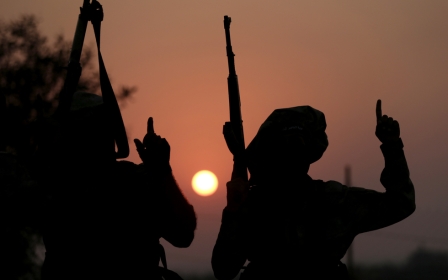Jerusalem protests: Palestine's new generation rises up

Jerusalem is once again witnessing a popular collective action; a spontaneous reaction to injustice and oppression amid the failure of local leadership structures.
People have become weary of empty slogans and meagre platforms, opting to take matters into their own hands. But this cycle of protest is not sustainable without a supportive social environment that transcends geography and borders.
As in the waves of anger that erupted in October 2015 and July 2017, the current popular action in Jerusalem represents resistance politics in its most vibrant form. Such collective actions present a challenge to authorities and elites, and to their claims of representation.
They know that by transforming the wave of anger into a broader movement, they will be closer to emancipation and self-determination
Still, the transformation of this anger into a social movement representative of all Palestinian people requires efforts that build on existing networks. It requires the consolidation of collective goals based on a programme of liberation from colonialism and defiance of oppressive authorities and elites.
Jerusalemites recognise this dynamic, and they know that by transforming the wave of anger into a broader movement, they will be closer to emancipation and self-determination. To this end, as political analyst Hani al-Masri argued during the 2017 protest wave, four requirements must be met: broad popular adoption, continuity, platform objectivity and leadership.
Stay informed with MEE's newsletters
Sign up to get the latest alerts, insights and analysis, starting with Turkey Unpacked
Leadership vacuum
The current collective action meets only some of these requirements. Geographical fragmentation limits the possibility for popular adoption, and without something to reinvigorate the movement, people’s willpower and persistence will inevitably be depleted. The platform, or programme for action, is still in development, and the path to shifting from immediate, essential demands to longer-term ones is a difficult, albeit necessary, process.
The leadership vacuum, however, constitutes the biggest challenge. It is of paramount importance to fill this vacuum with a legitimate, representative and effective leadership that sets the direction for the political regime in the aftermath of the current events in Jerusalem.
Collective action can be brief or sustained, institutionalised or disruptive. It turns into contentious action when utilised by people unable to access representative institutions to reclaim their political agency, and when they challenge repressive authorities and traditional political leaders and their narrow visions and interests.
With the ultimate goal being to attain national rights, this is a long battle, and victory must not be celebrated too early. True victory requires safeguarding achievements and continuing the popular action.
The current awakening in Jerusalem constitutes yet another opportunity to break free from the repressive cycle that overshadows the lives of Palestinians; to carry the situation into the streets, alleys and representative venues of political action.
Unifying strategy
Resistance against the coloniser and tools of colonisation are necessary for emancipation. People might be forgotten when they are inside the repressive cycle, but not when they are actively engaged in a popular, unifying collective action. This is true not only in the Palestinian context, but also in other liberation projects around the world.
To develop a unifying strategy, a nurturing environment is needed - and this is unattainable under the prevailing political leadership. This only renders it more pressing and urgent.
The popular adoption of mass, concerted action aimed at redefining the national project, discourse and goals - in addition to recreating the political regime, its tools and representative institutions - are overdue corrective steps. While the scope and extent of various protest waves has varied, the new generation of Palestinians has repeatedly indicated that it is ready to move in this direction.
Ultimately, however, the decisive factor will be for political actors to endorse Palestinians’ day-to-day resistance. Only then will the rift between the people and their leadership begin to diminish, allowing Palestinians to begin to build their own power base after decades of defeat. Then, they will truly be ready to face the Zionist colonial project and other regional projects pushing for an unfair settlement.
The equation is not linear, nor is the political game simple. We are not close to building the desired unifying base. We must still develop visions, programmes and arguments in order to materialise policies and practical steps. This is what is happening, albeit in its infancy. It is a path to hope amid escalating pain.
The views expressed in this article belong to the author and do not necessarily reflect the editorial policy of Middle East Eye.
This article is available in French on Middle East Eye French edition.
Middle East Eye delivers independent and unrivalled coverage and analysis of the Middle East, North Africa and beyond. To learn more about republishing this content and the associated fees, please fill out this form. More about MEE can be found here.







